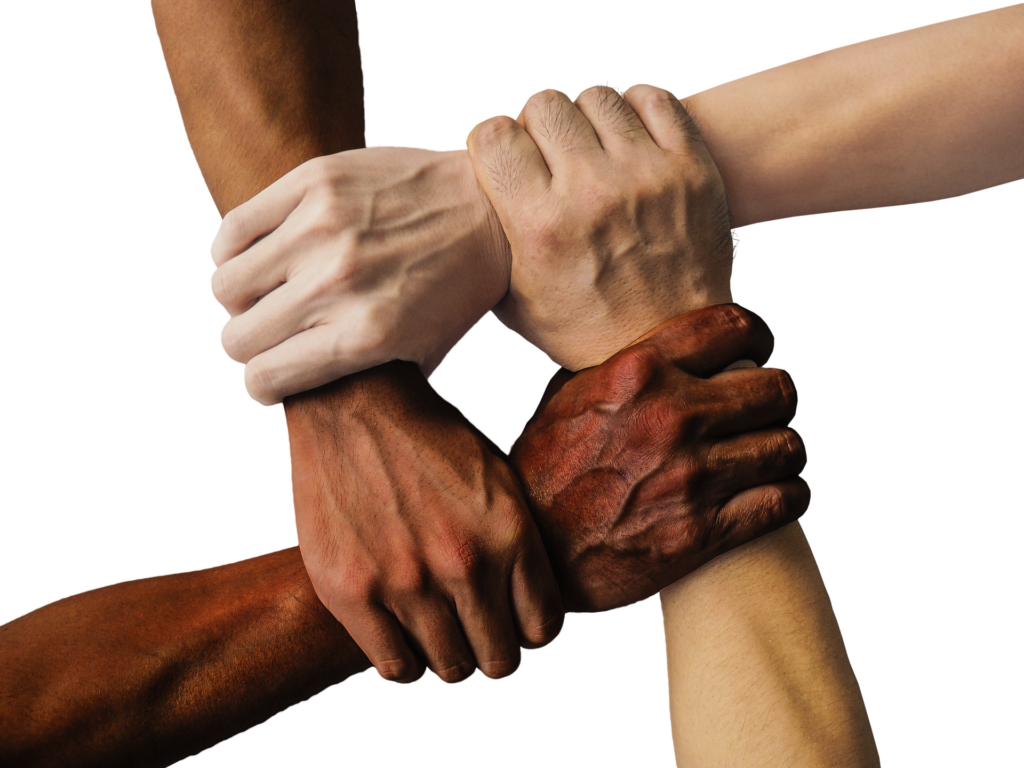Newsboys Strike of 1899
On July 18th, 1899, a group of angry boys in Queens tipped over a newspaper distribution wagon and refused to sell the New York World and Journal. So began the largest child-led strike in history. Thousands of child laborers quickly joined in, with the goal of renegotiating the wholesale price of their papers to defend their meager profit margins. Though their demands were not wholly met, their success in reaching compromise with the day’s leading news tycoons reverberates through labor history.
Newsboys Strike of 1899
 Essential Questions
Essential Questions
The following essential questions provide a framework for exploring this unit’s main ideas and themes:
- How did young people organize to advocate for themselves?
- What connections can be made to contemporary youth movements and labor issues?
New Jersey Student Learning Standards
The materials and suggested lesson plan below satisfy the following New Jersey Student Learning Standards:
6.1.12.CivicsDP.5.a ? ×
×
6.1.12.EconEM.5.a ? ×
×
6.1.12.GeoHE.5.a ? ×
×
6.1.12.HistoryCC.5.a ? ×
×
6.1.12.HistoryUP.5.a ? ×
×
6.1.12.HistoryCC.6.b ? ×
×
6.1.12.HistoryCA.6.a ? ×
×
6.1.12.HistoryCA.5.a ? ×
×
6.3.12.CivicsHR.1 ? ×
×
6.2.12.CivicsPI.3.a ? ×
×
6.2.12.CivicsPD.3.a ? ×
×
6.2.12.CivicsDP.3.a ? ×
×
6.2.12.CivicsDP.3.b ? ×
×
Lesson Module
![]() Goal and Learning Objectives: The goal of this lesson module is to provide resources and activities related to a youth-led labor movement for high school teachers to implement in their classrooms. Studying the Newsboys Strike of 1899 offers students an opportunity to examine young people’s roles at critical points in the nation’s history and to think about the impact of young people’s voices and influence on labor relations in our own time.
Goal and Learning Objectives: The goal of this lesson module is to provide resources and activities related to a youth-led labor movement for high school teachers to implement in their classrooms. Studying the Newsboys Strike of 1899 offers students an opportunity to examine young people’s roles at critical points in the nation’s history and to think about the impact of young people’s voices and influence on labor relations in our own time.
Content: Included in this module are suggested activities, discussion questions, infographics, and other resources designed to help teachers and students explore issues related to unionization, striking, and collective bargaining. These activities and materials can be integrated into a variety of classes, including U.S. history, government, and civics.
Activity I: History
Context: In 1898, the Spanish-American War raged, both initiated and driven by shady journalism practices. This so-called “yellow journalism” relied on sensationalized headlines and emotionally charged reporting to whip up public frenzy and thus create more demand for their papers. As the war went on, people gobbled up newspapers, eager to hear the latest from Cuba and the Philippines. In response, papers raised the wholesale price at which they sold the papers to their distributors, the newsboys or “newsies,” from fifty cents to sixty cents per one hundred copies. These child laborers would then resell the papers on the streets for a penny each. Most “newsies” were poor little boys, though there were some girls. Many were immigrants and orphans, and some were even homeless. As the war ended in February of 1899, paper sales went down drastically and the newsboys felt the loss of their ten cents per hundred. Most newspapers then reverted their wholesale price to pre-war levels, with the exception of the New York World and the New York Journal.
Instructions: Use the timeline, text and videos to introduce the class to the Newsboys Strike, and if time permits, use the powerpoint presentation and/or the further reading to give a more in-depth view of the event.
The publications’ owners refused to negotiate, and in mid-july of 1899 a group of child laborers in Long Island City, Queens turned over a distribution wagon and declared a strike, demanding a lower wholesale price. They were immediately joined by the workforce in Manhattan and Brooklyn, and sales dropped precipitously as they encouraged patrons to boycott The World and The Journal. In the first few days of the strike, anyone caught breaking the strike was mercilessly beaten by the youths, including grown men with police protection. The strike spread quickly throughout the cities of New Jersey and New England. After a huge rally, they shifted tactics towards nonviolence and the children won widespread public support. After two weeks of striking, the publishers and distributors reached a compromise: the wholesale price would remain sixty cents, but publishers would buy back any unsold papers. This put an end to the largest child-led strike in history, inspired copy-cat strikes around the country, and prompted investigation into and regulation of child labor in the coming years.
Author’s Note: The below video blends legitimate historical photographs with stills from the Newsies movie and stage show
Further reading: https://www.zinnedproject.org/news/tdih/newsboys-strike/
To test and reinforce students’ recall of events, play a Kahoot!
Activity II: Document-Based Question - Mini-Q
Historians use primary sources to piece together what happened in the past. This mini-q is shorter and less involved than a typical DBQ while still engaging in primary source analysis. Use the linked sources to answer one of the questions below. Support your answer with evidence from the texts. Use multiple sources to ensure that you’re thorough.
Option 1: What tactics did the newsboys use to stop each other from breaking the strike?
Option 2: What tactics did the newsboys use more broadly to win public support of their strike and/or boycott?
- “Newsboys On Strike”
- “Striking Newsboys Are Firm”
- “Newsboys Still Hold Out”
- “Race Track Higgins’ Speech at the July 24th Rally”
- 1908 Photograph by Lewis Hines
- Author’s Note: This was taken years after the strike. They are not the newsboys in question; this is for visualization purposes and analysis of newsboys in general.
Activity III: Creative Writing - Newspaper Article
 Instructions: Review the timeline of the Newsboys Strike of 1899 and the real newspaper articles linked in above. Pretend you are a reporter for one of the newspapers of the day (New York Times, New York Tribune, New York Sun, Brooklyn Eagle, New York World or New York Journal.) Using the provided real newspaper articles from history, pick a day of the two weeks of the strike and write about what you “saw” and if you think the newsboys were successful in their cause. Which newspaper you chose should affect your writing. For example, someone reporting for the New York World would be motivated to present the strike in a negative light because their paper is being struck against.
Instructions: Review the timeline of the Newsboys Strike of 1899 and the real newspaper articles linked in above. Pretend you are a reporter for one of the newspapers of the day (New York Times, New York Tribune, New York Sun, Brooklyn Eagle, New York World or New York Journal.) Using the provided real newspaper articles from history, pick a day of the two weeks of the strike and write about what you “saw” and if you think the newsboys were successful in their cause. Which newspaper you chose should affect your writing. For example, someone reporting for the New York World would be motivated to present the strike in a negative light because their paper is being struck against.
Activity IV: Persuasive Writing - Speech
 Instructions:“Kid Blink”, “Dave” Simmons, “Racetrack” Higgins and their fellow newsboys had to make speeches to convince others to join their cause. Speeches have a lot in common with persuasive writing more broadly. Reference Higgins’ speech. Examine how you can persuade others to share your
Instructions:“Kid Blink”, “Dave” Simmons, “Racetrack” Higgins and their fellow newsboys had to make speeches to convince others to join their cause. Speeches have a lot in common with persuasive writing more broadly. Reference Higgins’ speech. Examine how you can persuade others to share your
values or point of view by writing a speech using the prompt below:
Examine an example of unfairness in your life. Can anything be done to fix it? What can or should be done? Persuade others to make a change by writing a speech to share at an imaginary assembly.
Extend: Send your speech to someone with the power to enact change. This could be your peers, teacher, principal, parent or public official. How did they respond? What does their response show you about the power dynamic between you and them?
Bonus! Lesson Plan Grades 6-8: Newsies (1992) vs. The Newsboys Strike of 1899
Lesson Outline: After watching Newsies (1992), students will learn about the real strike it is based on. In a discussion, mini-lecture, reading and exit ticket, students will be able to compare and contrast the fictionalized narrative with real history. This lesson can be supplemented with the materials above. Find below the lesson plan and materials.

Materials
![]() Don’t have time to use these activities? Do you already have a lesson plan for this topic?
Don’t have time to use these activities? Do you already have a lesson plan for this topic?
Here are links to the materials presented in the above activities that can be used any way you see fit!
Activity 1: Presentation Slides, Kahoot!, Strike Timeline,
Activity 2:“Newsboys On Strike”, “Striking Newsboys Are Firm”, “Newsboys Still Hold Out”, “Race Track Higgins’ Speech at the July 24th Rally”, 1908 Photograph by Lewis Hines


